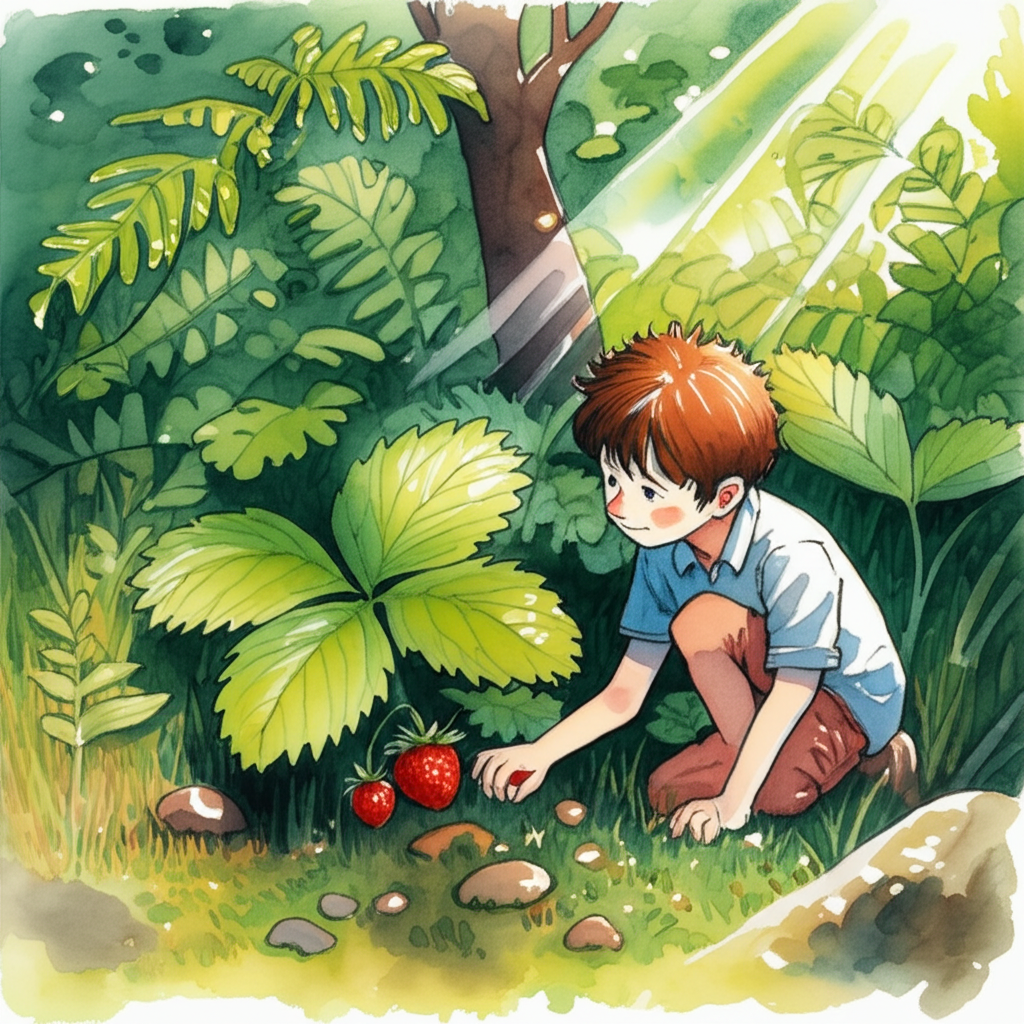
It was a long walk to school. Down the hill, past the big, leafy bushes, across a little stream, around a bare, brown hill, and then through the small, busy market, past fruit stands piled high with oranges, guavas, bananas, and apples.
The boy often stared at those piles of bright oranges – oranges from far away, shining like the sun even in the cold winter. His nose would wiggle at the yummy smell of melons in summer; his fingers would sometimes gently touch the fuzzy skin of a peach. But these were treats he couldn’t have. The boy didn’t have any money.
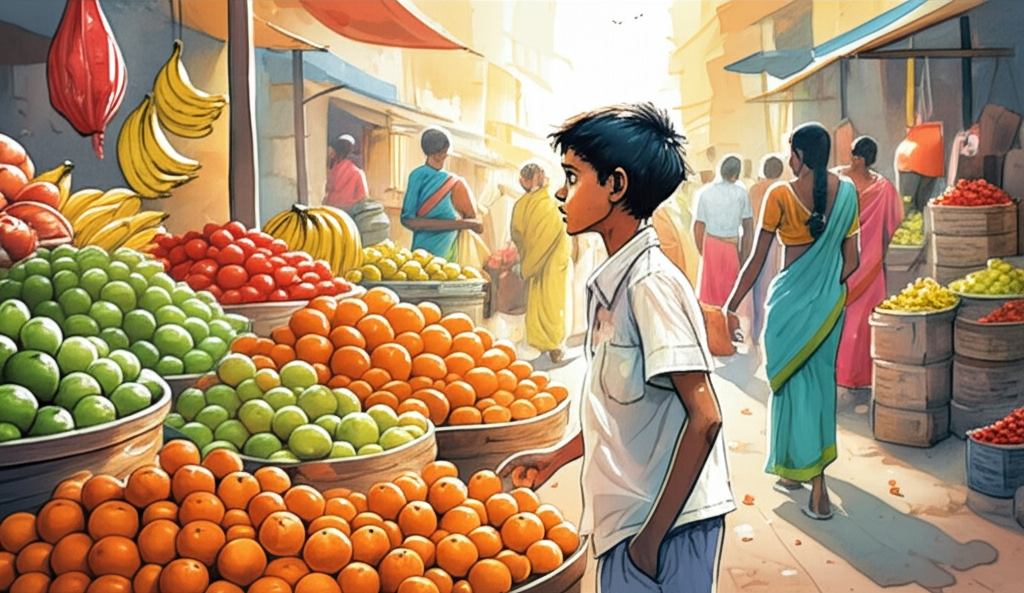
He ate one meal at seven in the morning before school, and another at seven in the evening when he got home. Sometimes – especially when he was at school, and his teacher talked and talked about being good and brave – he felt really hungry. But on the way to school, or on the way home, he could usually find some wild berries or fruit.
The boy’s name was Vijay, and he lived in a village near a big town. His parents grew food on small patches of land on the hills. They grew potatoes, onions, barley, and corn; but it wasn’t enough to feed them all. When they didn’t have many veggies, they cooked the leaves of stinging-nettles and ate them like spinach.
Vijay’s parents knew it was important for him to go to school, and it didn’t cost much, except for the books. But it was a long walk to town, and a long walk makes a boy hungry.
But he could almost always find wild fruit! The purple berries of the prickly bushes, getting ripe in May and June. Wild strawberries, hiding in the shade like little drops of blood on the green grass. Small, sour cherries, and hard fruits called medlars. Vijay’s strong teeth and tongue would find any bit of yummy juice hidden inside. And in March, there were the flowers from the big, leafy bushes.
His mother made jam from them. But Vijay liked them just as they were. He put the petals on his tongue and chewed them until the sweet juice went down his throat. But in November, there was no wild fruit. Only acorns on the oak trees, and they were bitter, only good for the monkeys.
He walked confidently through the market, his legs strong. He looked like a healthy boy, until you got close and saw the spots on his skin and his tired eyes.
He walked past the fruit stands, wondering who ate all that fruit, and what happened to the fruit that went bad. He walked past the sweet shop, where hot, fresh sweets called jelabies looked like orange jewels in a glass box, and where a big, round man cut a thick piece of sweet halwa.
Vijay’s mouth watered; his stomach rumbled. But he didn’t show that he was hungry.
And then, a candy shop! Glass jars full of chocolates, peppermints, toffees – candies he didn’t even know the names of, candies from far away – wrapped in colorful paper.
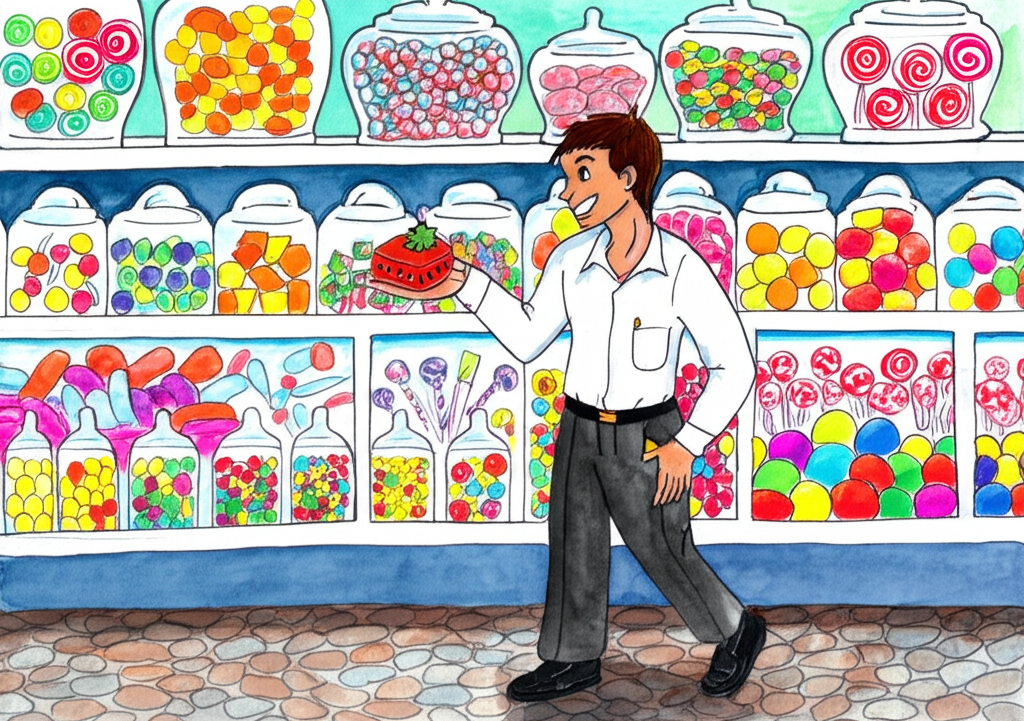
A boy had just bought a bag of sweets. He had one in his mouth. He was a boy with nice clothes; coins jingled in his pocket. He moved the candy from one cheek to the other. He bit into it, and Vijay heard the crunch and looked up. The boy smiled at Vijay, but walked away.
They met again, further down the road. Again, the boy smiled, and even looked like he was going to offer Vijay a sweet. But this time, Vijay looked away shyly. He didn’t want to seem like he wanted the sweets or that he was hungry for one.
But he kept seeing the boy, who always showed up at some corner, sucking on a sweet, moving it around in his mouth, letting it show between his wet lips – a sticky green thing, looking so yummy and good.
The bag of sweets was almost empty.
Finally, Vijay decided he had to walk faster than the boy, forget about the sweets, and hurry home. Otherwise, he might grab the bag and run!
And then, he saw the boy leave the bag on a bench, look at him once, and smile – smile shyly and nicely – before walking away.
Was the bag empty? Vijay wondered excitedly. It couldn’t be, or it would have blown away right away. There must be a few sweets left. The boy had gone to get a snack, and Vijay could have the rest of the sweets.
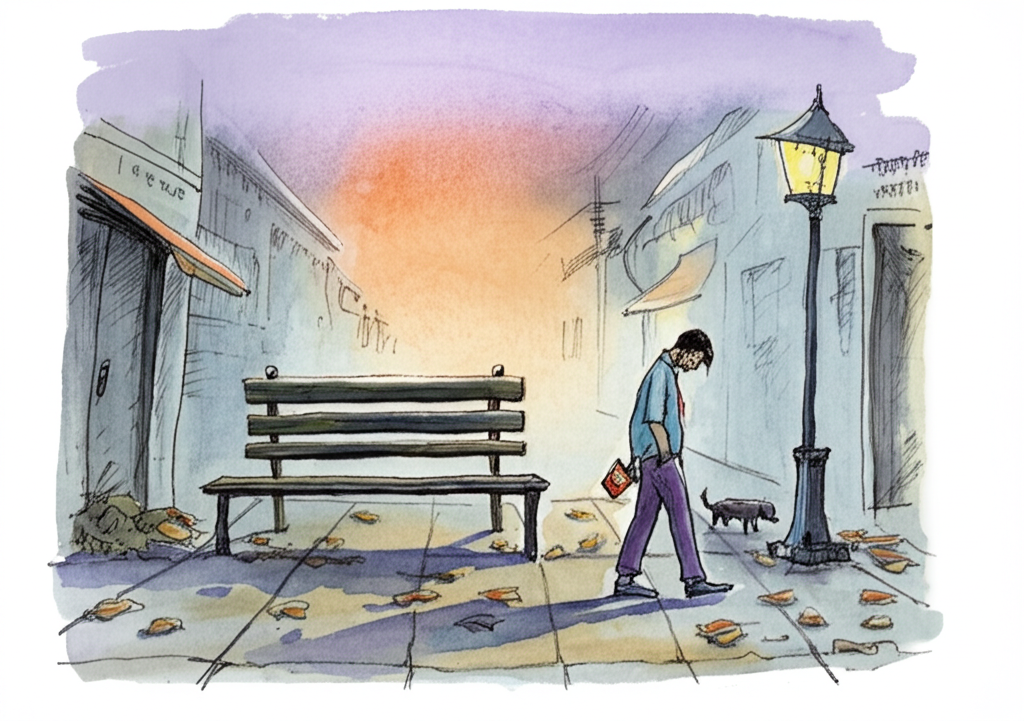
Vijay took the bag and stuffed it into his shirt pocket. Then he hurried home. It was getting late, and he wanted to be home before dark.
As soon as he was out of town, he opened the bag and shook the sweets out. Their red wrappers shone like rubies in his hand.
Carefully, he unwrapped one.
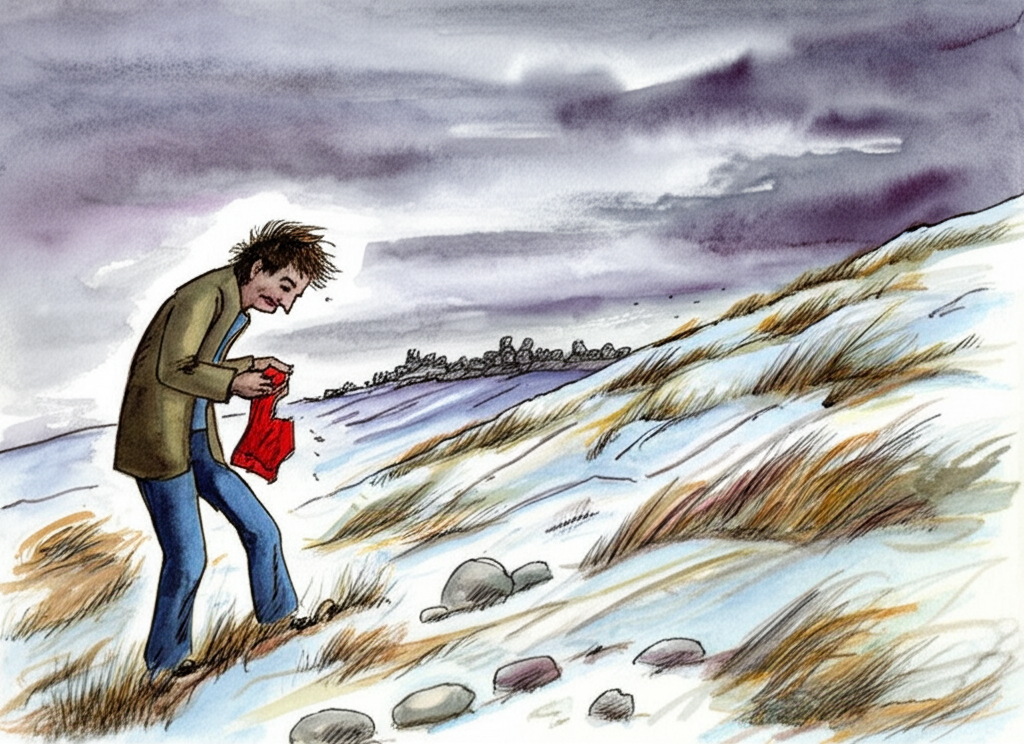
There was no sweet inside, just a smooth, round stone.
Vijay found stones in all the wrappers. In his mind, Vijay saw the smiling face of the boy in the market: a boy who smiled sweetly but tricked him with stones instead of sweets.
Holding back angry tears, Vijay threw the stones down the hillside. Then he put his bag of books over his shoulder and started the long walk home.
There were patches of snow on the ground. The grass was brown, the bushes were bare.
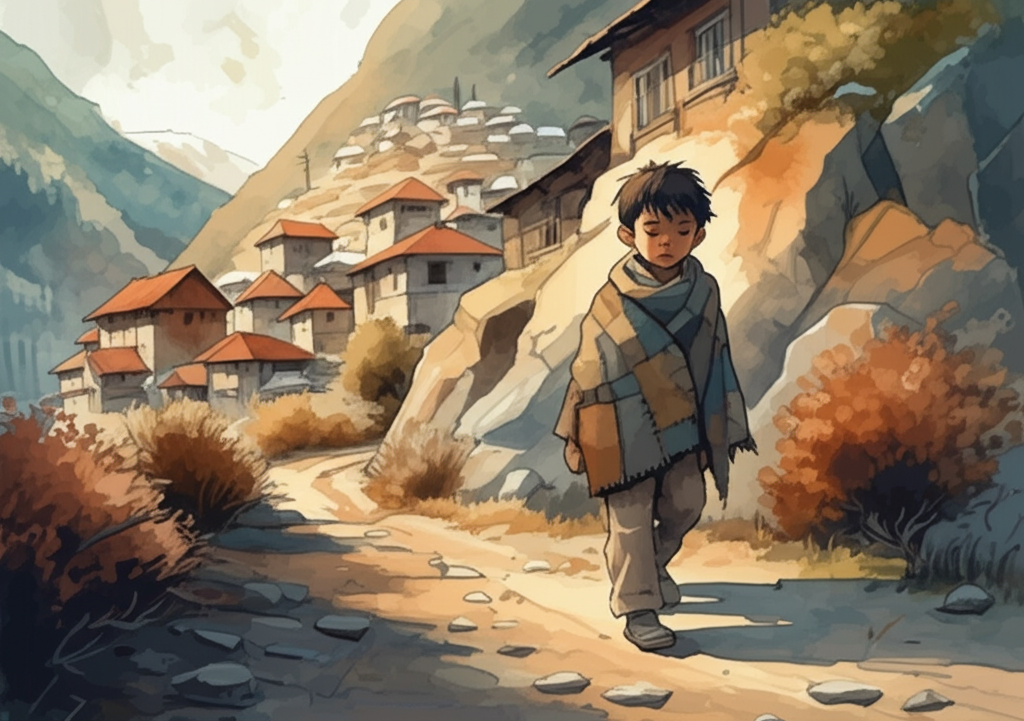
There is no wild fruit in November.